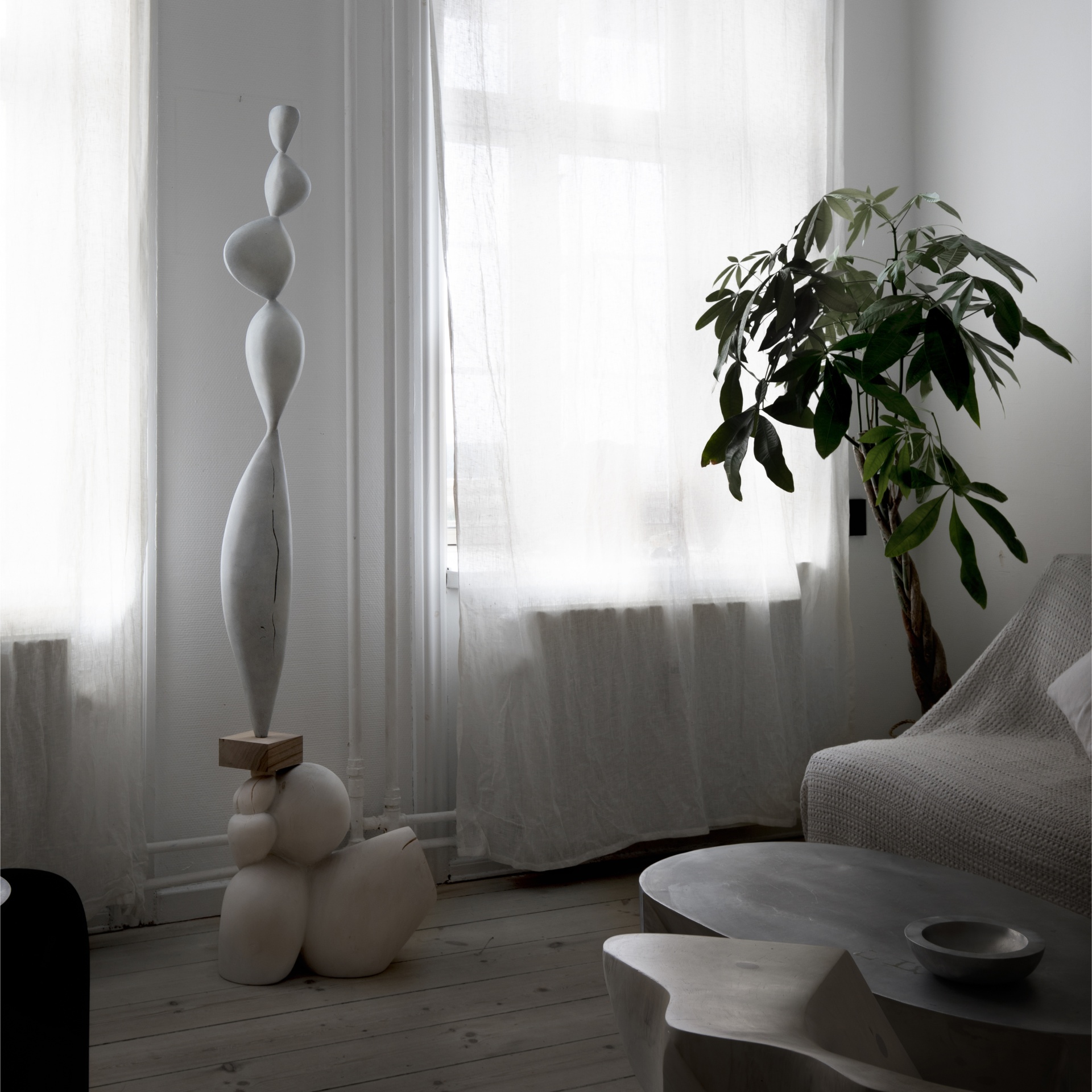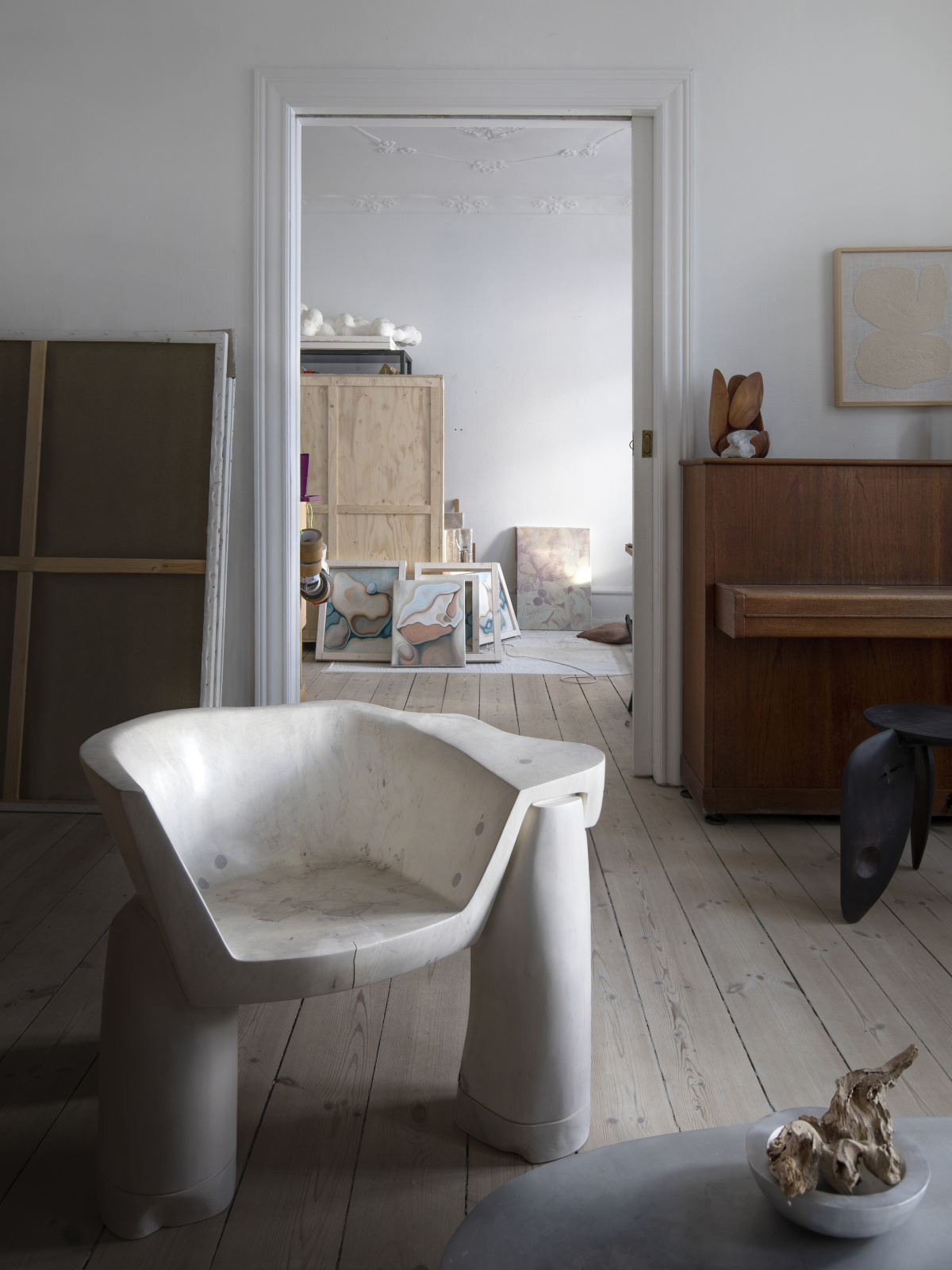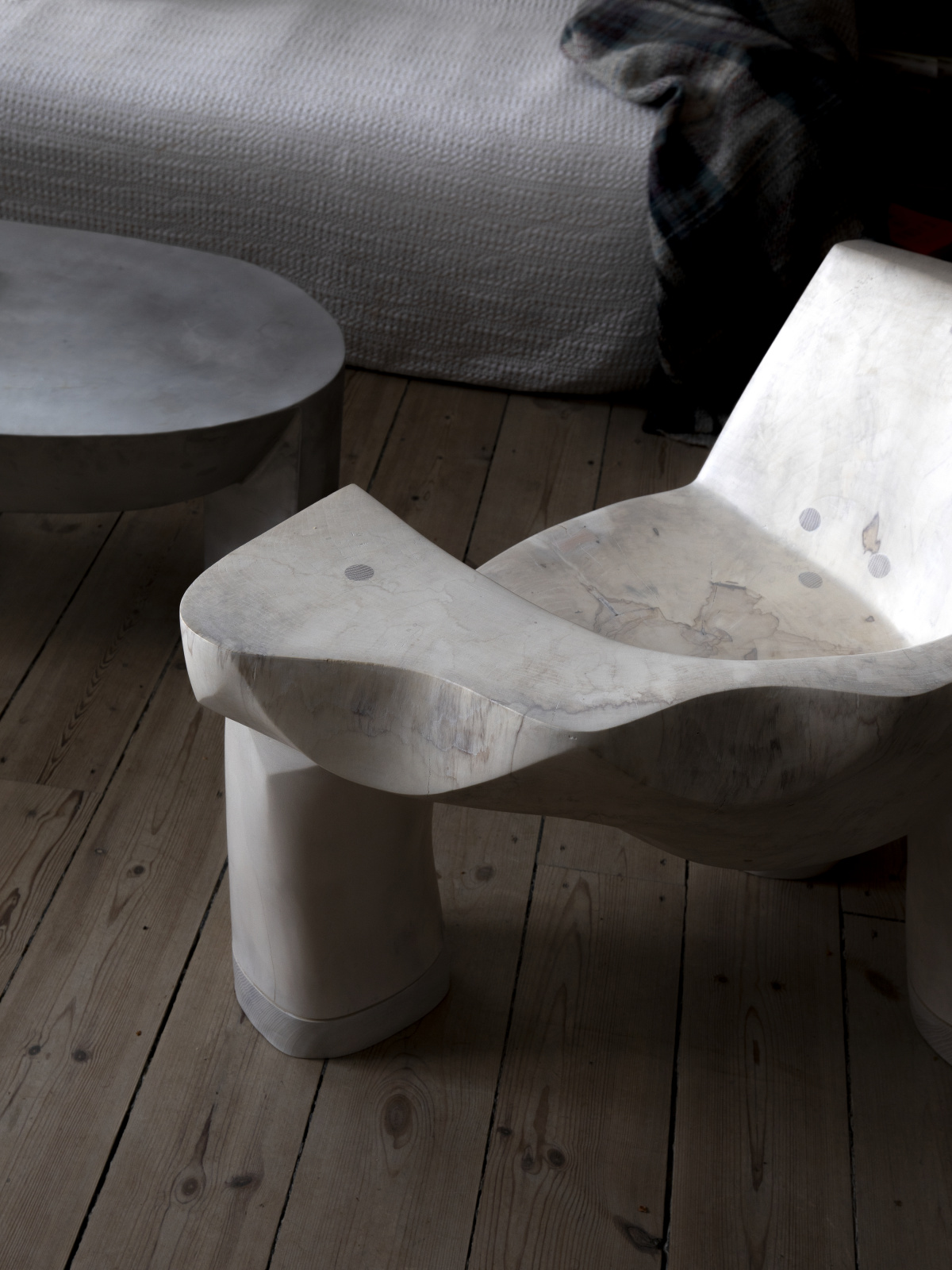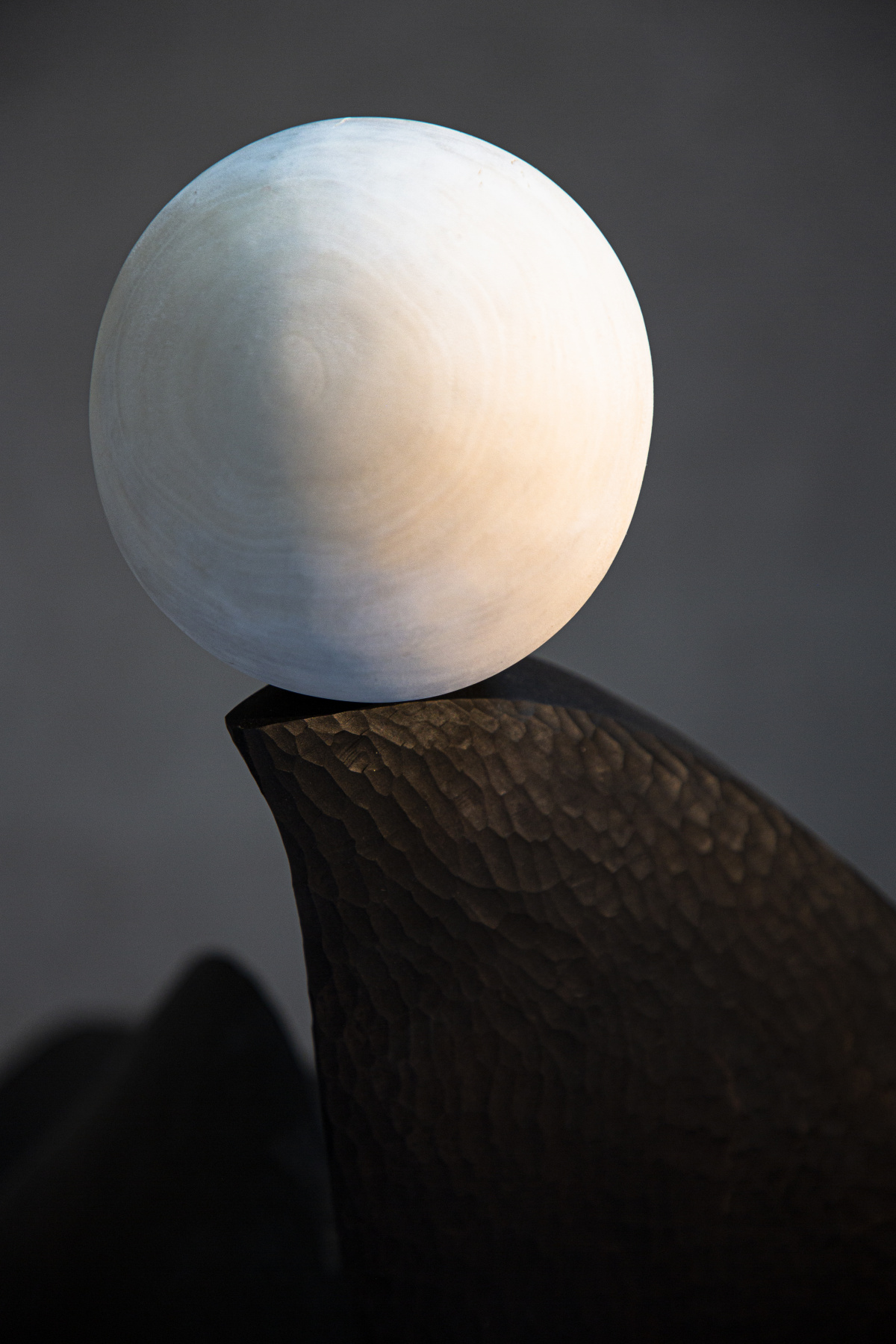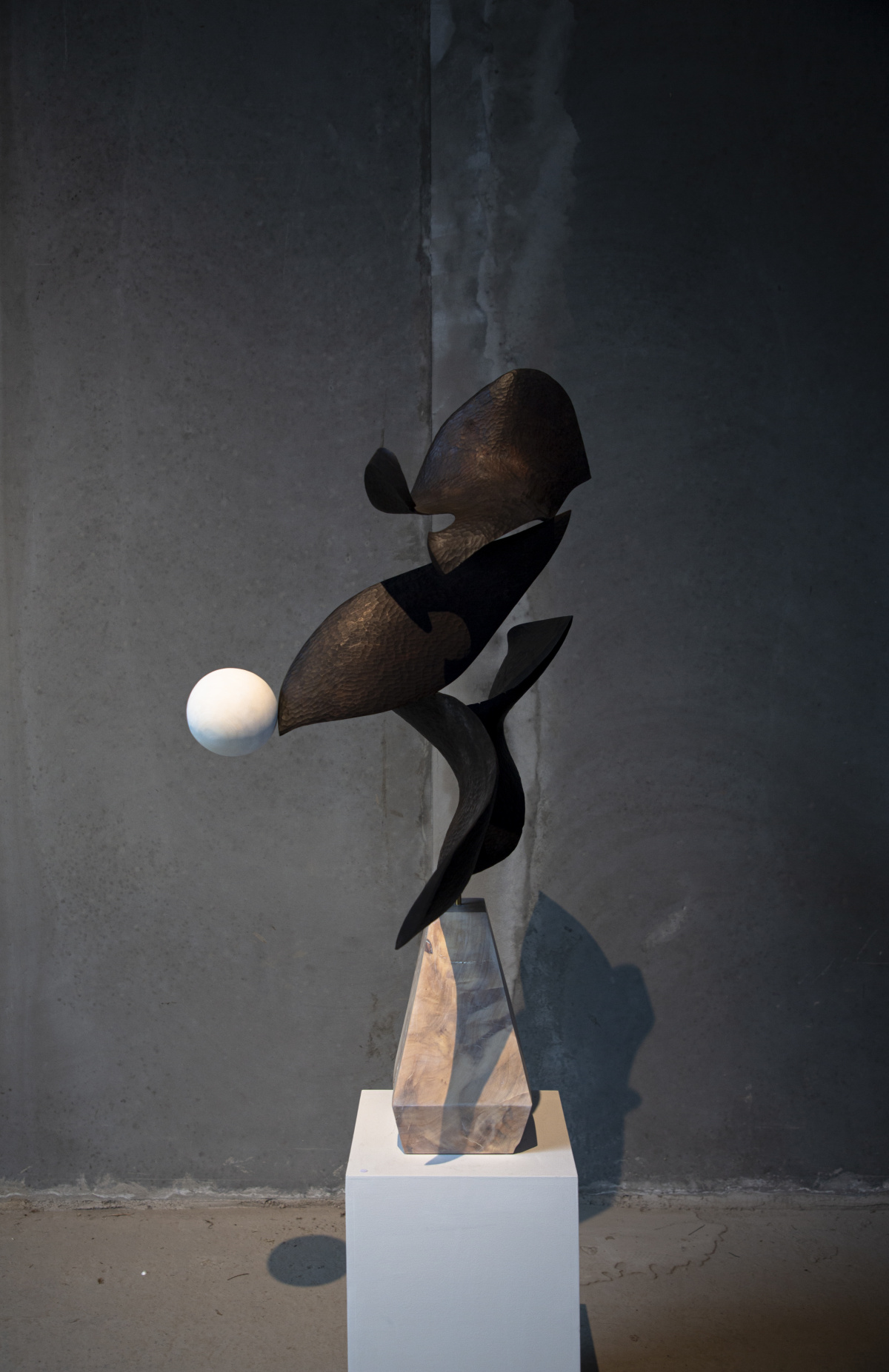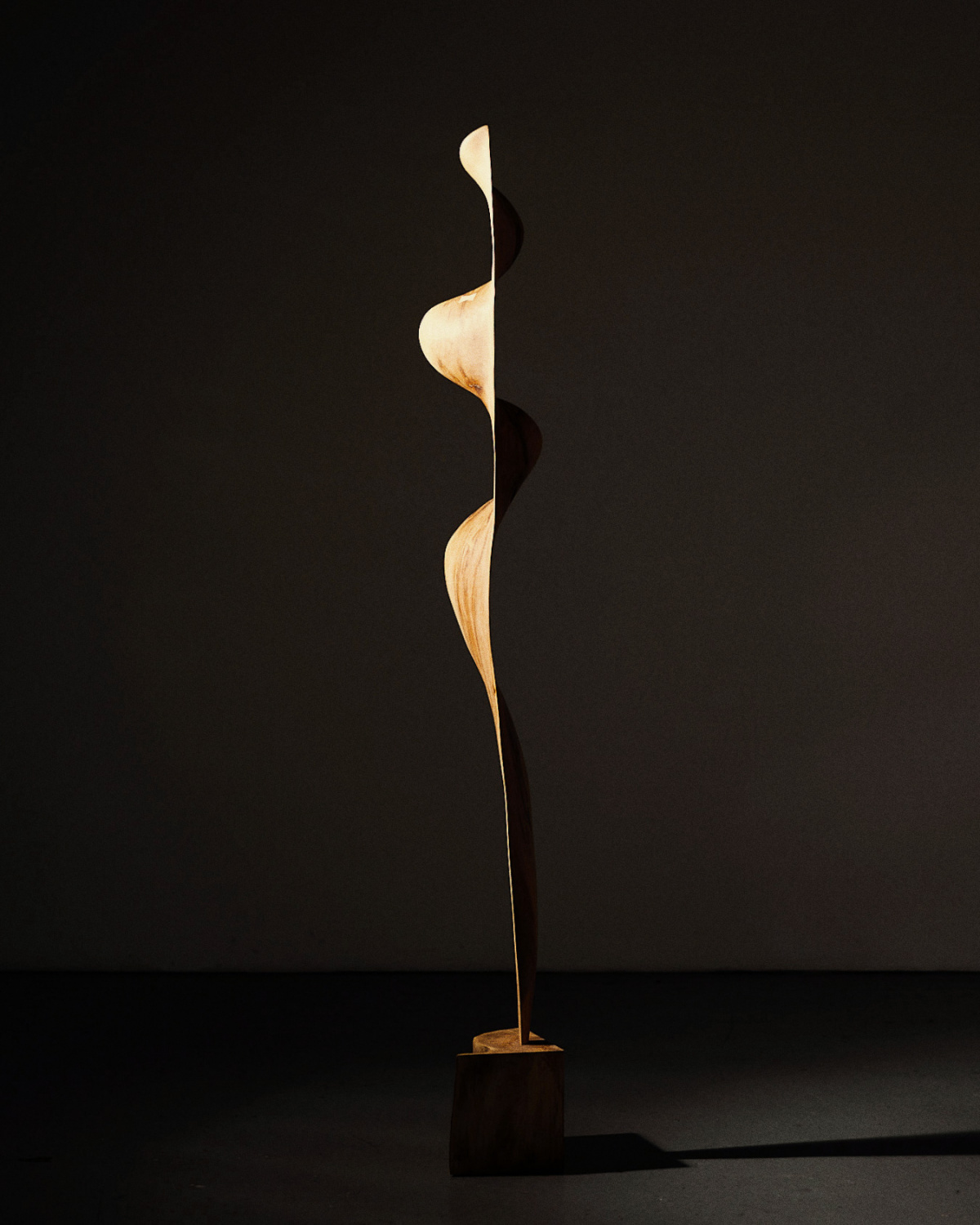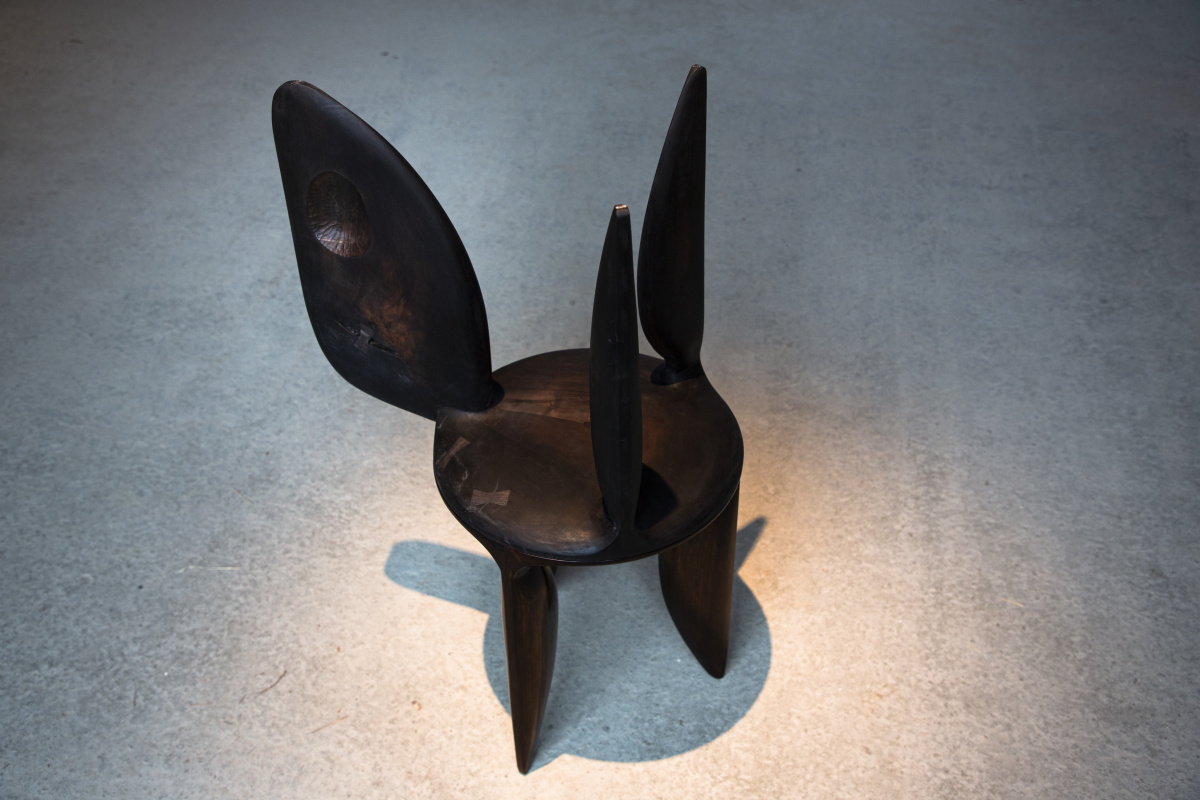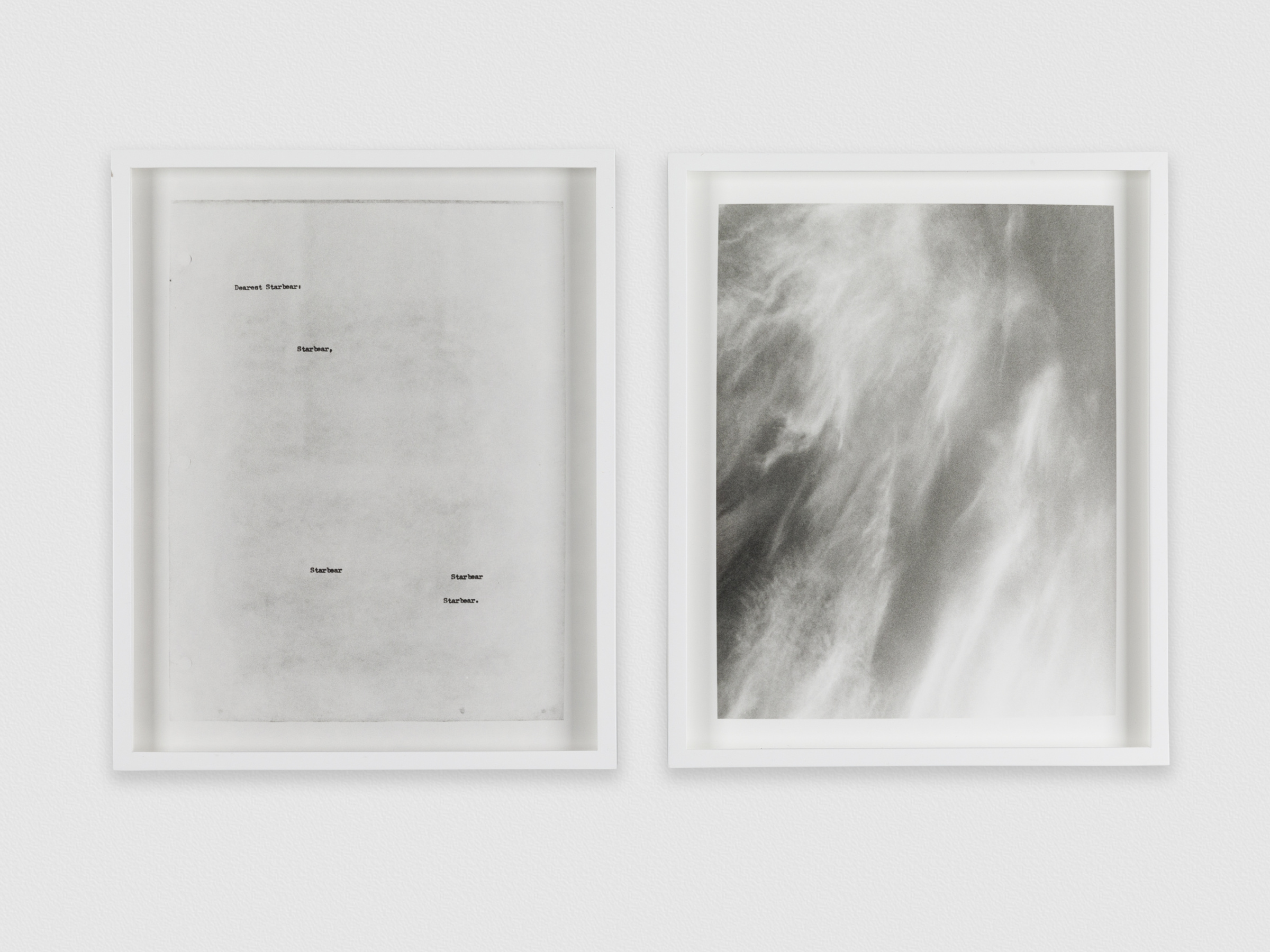In the center of Copenhagen, you can often find British-born sculptor Nicholas Shurey wielding a chainsaw, dust flying all around him as he works with a large piece of leftover timber from a friend’s sawmill.
Nicholas bikes from his apartment to his studio most mornings, traveling a scenic route through the city center and along the harbor. Once there, it’s all chisels, gouges, spokeshaves, and rasps making serpentine forms, some of which he casts in bronze. His creations blur the boundary between sculpture, furniture, and functional objects.
Nicholas loves working with wood. He contorts his body in strange ways to keep steady while sanding a particularly curved piece. “It’s pure elation to take a block, carve away, and reveal this hidden form,” he says. “I look at an object and feel this deep understanding. Everything seems complete in that instant.”
Nature has always appealed to Nicholas. During the pandemic he rented an idyllic cabin near Copenhagen to get away. Four years ago he quit his job as an architect when he fell in love with sculpting while at his friend’s farm in the foothills of the Alps. He became a sculptor because he couldn’t reconcile his slower, less capitalistic approach with the whims of a consumerist field—especially one so disconnected from its raw materials. “In English we have this separation of material from commodity, while in Danish the word for wood and tree are the same,” he says. “It’s beautiful to work with something hundreds of years old but ultimately the product of a living organism.”
Nicholas adopts a deliberate cadence about his connection to his craft, though he’s careful not to sound “too new age.” Together we marvel at one of his recent sculptures—a three-legged “elephant chair” carved from lightly colored horse chestnut wood. It’s pristine enough to be mistaken for marble, but you can sit on it—a contradiction recalling how wood itself is simultaneously strong and soft. Sometime soon he plans to take this juxtaposition further and create a more conceptual sculpture combining wood with cotton candy, a reference to the historic deforestation of the Danish countryside.
He also has a few private commissions coming up for clients in Morocco and is planning some land art pieces for friends in a Norwegian forest. “I want to avoid the dangers of mass production,” Nicholas says. “There’s something really nice about each piece being slow, enjoyable, and unique.”
- “Elephant Chair,” 2021. Courtesy of Nicholas Shurey
- “Elephant Chair,” 2021. Courtesy of Nicholas Shurey
- Photo by Hipermania
- Photo by Hipermania
- “Plane (Strandboulevarden),” 2020. Courtesy of Nicholas Shurey
- Photo by Hipermania
A version of this article originally appeared in Sixtysix Issue 08 with the headline “Nicholas Shurey.” Subscribe today.
